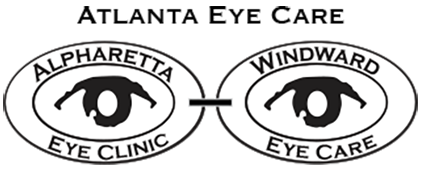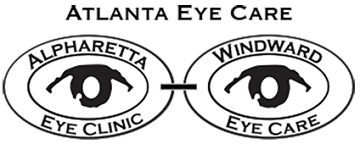About Keratoconus
With Keratoconus, the usually round, dome-shaped cornea becomes thin and starts to develop a cone-shaped bulge. A cornea shaped like a cone causes blurry vision and may also cause an increased sensitivity to harsh glare and light. It occurs in both eyes typically in individuals aged 10-25 years, and progresses slowly over time. The expert optometrists at Atlanta Eye Care diagnose and correct this condition with either glasses or contact lenses early on. As the condition progresses, it may be necessary to be fitted with special kinds of contact lenses including rigid gas permeable lenses. More advanced stages of the disorder may call for a cornea transplant in some individuals.
Causes of Keratoconus
The exact cause is not known. The condition may be linked to any of the following:
- Several years of consistently wearing contact lenses
- Vigorous eye rubbing
- A combination of several disorders, including hereditary factors, such as Down Syndrome or enzyme abnormalities
- Other significant eye disorders, such as Vernal Keratoconjunctivitis, Retinopathy of Prematurity, or Retinitis Pigmentosa
Symptoms
Symptoms, which may change as the condition progresses, include some, or all, of the following:
- Greater sensitivity to harsh glare and bright light
- Night vision problems
- Distorted or blurred vision
- Abrupt clouding or worsening of vision, subsequently caused by a key condition where the back of the cornea ruptures and then fills up with fluid
- Several changes in prescriptions for glasses
Risk Factors
The following factors can increase your overall chances of developing the condition:
- Family History: If there’s a known family history of the condition, your chances are higher of developing the disorder.
- Some Diseases: You may have a much higher risk of developing keratoconus if you have certain genetic disorders or inherited diseases, including Ehlers-Danlos Syndrome, Down Syndrome, Osteogenesis Imperfecta, or Leber’s Congenital Amaurosis.
Treatments
Milder cases of keratoconus can be effectively treated with either glasses or contact lenses. After a few year,s the cornea will naturally become stable. Most individuals do not need further treatment and avoid serious vision problems. For some people with the condition, however, wearing contact lenses starts to become more difficult or their cornea eventually becomes scarred. In such cases, surgery may be inevitable.
Contact Lenses: For the majority of people with this condition, contact lenses are by far the most successful means of treating it:
- Soft contact lenses or eyeglasses
- Piggyback lenses
- Scleral contact lenses
- Hybrid lenses
- Rigid gas permeable contact lenses
If you’re someone using scleral or rigid gas permeable contact lenses, be sure to have them properly fitted by one of our optometrists at either Alpharetta Eye Clinic or Windward Eye Care. It’s also important to note that you will need frequent re-fittings and regular checkups since a hard contact lens that doesn’t fit properly can literally damage the cornea.
Surgery: It may be necessary to have surgery if you have any of the following:
- Corneal scarring
- Poor vision despite wearing very strong prescription lenses
- Extreme thinning of the cornea
- Unable to wear any kind of contact lenses
Surgical options
- Cornea transplant, or keratoplasty
- Corneal inserts, or intracorneal ring segments
Keratoconus: Our doctors are no strangers to corneal and other eye conditions, including astigmatism. Don’t let your eyesight deteriorate. Make an appointment at either Alpharetta Eye Clinic or Windward Eye Care today for an evaluation with one of our caring and compassionate doctors. If you live anywhere in North Fulton County, including Milton, Johns Creek and Roswell, our offices are convenient. We accept FSA and other health spending accounts. We want to be your family’s eye experts.

